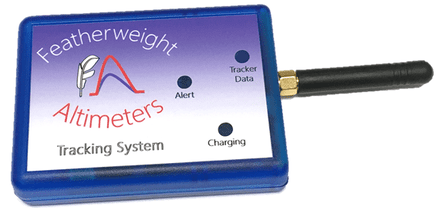An MOT boot is a device used to immobilize vehicles that have violated certain regulations, most often related to parking offenses or failure to meet required MOT (Ministry of Transport) standards. Known as a “boot” or “wheel clamp,” this tool locks a vehicle’s wheel in place, preventing movement until the issue is resolved. Getting an MOT boot can be frustrating and inconvenient, but understanding the reasons why your car might be booted and how to avoid it can save you time and trouble. This article will explain how MOT boots work, when they are applied, and the steps you can take to prevent this situation from happening to you.
What Is an MOT Boot?
An MOT boot, also known as a car wheel clamp, is a device placed on a vehicle’s tire to prevent it from being moved. Typically, this clamp is used by parking enforcement officers, the police, or local councils to immobilize cars that are in violation of specific laws or regulations. The most common reasons for an MOT boot to be applied include unpaid parking tickets, expired MOT certificates, or illegal parking in restricted areas.
The MOT boot works by physically locking one or more of the vehicle’s wheels, making it impossible to drive away. It remains attached until the owner rectifies the issue, usually by paying a fine or taking necessary actions related to the vehicle’s MOT compliance.
You may also read: YTMP3: The Easy Way to Convert YouTube Videos to MP3 Files
Why Are MOT Boots Applied to Vehicles?
The primary reason for attaching an MOT boot to a vehicle is to enforce compliance with the law, especially when a car poses a potential risk or is illegally parked. Common reasons for an MOT boot include:
- Unpaid Fines: If you’ve accumulated unpaid parking tickets, authorities may boot your vehicle to ensure you pay the outstanding amount.
- Expired MOT Certificate: In the UK, vehicles are required to pass an annual MOT test to ensure roadworthiness. Driving without a valid MOT can lead to your vehicle being booted by authorities.
- Parking Violations: Illegal parking in restricted areas, such as no-parking zones or disabled spots without a valid permit, can result in your car being clamped.
- Abandoned Vehicles: If a car is suspected of being abandoned or unregistered, an MOT boot might be applied to prevent it from being driven.
In these cases, the boot serves as a means of enforcing rules and ensuring the vehicle is brought into compliance with regulations.
How Does the MOT Boot Work?
The MOT boot is designed to lock the wheel of a vehicle, preventing it from moving. These boots are typically made from heavy-duty steel and are equipped with a locking mechanism that is difficult to tamper with. When the boot is attached, it restricts the wheel from rotating, immobilizing the car until the boot is removed.
To have the boot removed, the vehicle owner must contact the relevant authority, such as the police or local council, pay any associated fines or fees, and in some cases, provide proof that the vehicle meets MOT requirements or has been legally parked. Once the issue is resolved, the enforcement officer will unlock the boot and the car will be free to move.
What to Do If You Get an MOT Boot
Discovering that your car has been booted can be a stressful experience, but it’s important to handle the situation calmly and efficiently. Here’s what to do if you find an MOT boot on your vehicle:
- Check for Notices: There is typically a notice placed on the vehicle explaining why it has been booted and what steps need to be taken to resolve the issue. Read this carefully to understand your next actions.
- Pay Any Fines or Fees: If the boot was applied due to unpaid fines, parking violations, or expired MOT, you will need to pay any outstanding fees. Some authorities may allow you to pay online, while others require payment at a specific location.
- Schedule an MOT Test: If the boot was applied due to an expired MOT certificate, you will need to book an MOT test and provide proof of compliance before the boot can be removed.
- Contact the Enforcement Authority: Once you’ve taken the necessary steps, contact the authority that applied the boot to arrange for its removal. In most cases, a representative will come to the location of your car to unlock the boot.
How to Avoid Getting an MOT Boot
While an MOT boot can be a hassle, there are several steps you can take to avoid getting one:
- Stay Current on Your MOT: Ensure that your car has a valid MOT certificate at all times. You can set reminders for your annual test to avoid driving with an expired MOT.
- Pay Fines Promptly: If you receive a parking ticket, pay it as soon as possible to avoid accumulating fees and penalties. Unpaid fines can quickly lead to more severe consequences, such as having your vehicle booted.
- Park Legally: Always park in designated areas and follow local parking regulations. Avoid parking in restricted zones or blocking driveways, as this can result in a boot being applied to your vehicle.
- Register Your Vehicle Properly: Ensure that your vehicle is properly registered with the DVLA (Driver and Vehicle Licensing Agency) and that any changes in ownership or address are updated promptly.
By staying proactive and aware of your vehicle’s legal status, you can significantly reduce the chances of encountering an MOT boot.
MOT Boot Removal Process
Once you’ve resolved the issue that led to your vehicle being booted, the removal process is fairly straightforward. After paying any fines or fees, and ensuring that your vehicle is legally compliant, you can contact the relevant authority to arrange for the boot’s removal.
In most cases, the enforcement officer will come to the location of the vehicle and remove the boot on-site. The process usually takes only a few minutes, and your car will be free to move once the boot is taken off. Keep in mind that the removal of an MOT boot typically comes with an additional fee, which covers the administrative costs of applying and removing the device.
The Legal and Ethical Considerations of MOT Boots
MOT boots are considered a necessary enforcement tool for authorities to ensure compliance with vehicle regulations. While they may seem inconvenient to drivers, they serve an important role in maintaining road safety and enforcing parking laws.
However, there are ongoing debates about whether the use of MOT boots is always fair or justified. Some argue that booting a vehicle for minor parking violations or small unpaid fines can be excessive, while others believe it is a necessary deterrent for repeat offenders. Regardless of the debate, it’s clear that MOT boots are here to stay as an enforcement tool.
FAQs
What is an MOT boot?
An MOT boot is a wheel clamp used by authorities to immobilize a vehicle that has violated parking regulations, has unpaid fines, or lacks a valid MOT certificate.
Why would my car be booted?
Common reasons include unpaid parking fines, an expired MOT certificate, illegal parking, or suspicions that the vehicle has been abandoned.
How do I get an MOT boot removed?
To remove an MOT boot, you must pay any fines or fees, resolve the violation (such as renewing your MOT certificate), and contact the authority responsible for applying the boot.
Is driving without an MOT illegal?
Yes, in the UK, it is illegal to drive a car without a valid MOT certificate unless you are driving to a pre-scheduled MOT test. You may face fines, penalties, or vehicle immobilization.
Can I avoid an MOT boot?
Yes, by staying current on your MOT certificate, paying any parking fines promptly, and parking legally, you can avoid the risk of having your car booted.
How much does it cost to remove an MOT boot?
The cost varies depending on the authority and the reason for the boot, but there are often additional fees for the removal of the device on top of any outstanding fines.
Conclusion
The MOT boot is an effective tool for enforcing parking regulations and MOT compliance. While having your vehicle booted can be an inconvenience, understanding the reasons behind it and taking proactive measures can help you avoid the situation altogether. By staying current on your vehicle’s MOT, paying fines on time, and parking responsibly, you can keep your car boot-free and on the road.




